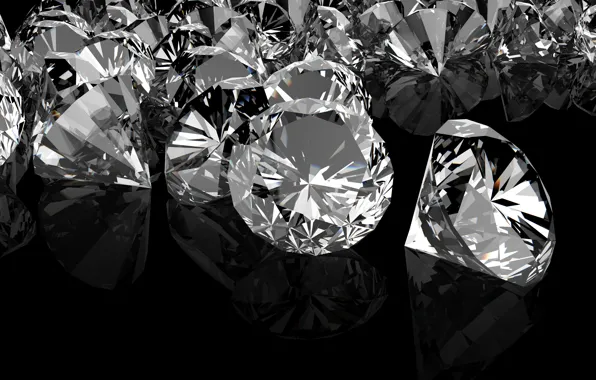When it comes to purchasing a lab grown diamond, one of the most important considerations is understanding the diamond grading system. The two most well-known gemological laboratories that grade diamonds are the International Gemological Institute (IGI) and the Gemological Institute of America (GIA). While both institutions offer reliable and accurate grading services, the IGI vs GIA lab grown diamonds debate often comes up due to their differing approaches and reputation. This article will delve into the key differences between IGI and GIA lab grown diamonds, how they impact your buying decision, and why understanding these distinctions is important when purchasing a diamond.
What is IGI and How Does it Grade Lab Grown Diamonds?
The International Gemological Institute (IGI) is one of the largest and most reputable gemological laboratories in the world. IGI offers grading reports for both natural and lab grown diamonds. When it comes to IGI vs GIA lab grown diamonds, IGI is known for its comprehensive and detailed grading reports, which assess all the key factors of diamond quality, including cut, color, clarity, and carat weight. IGI also grades lab grown diamonds according to the same standards used for natural diamonds, making their grading system reliable and consistent. However, some people feel that IGI’s grading tends to be slightly more lenient compared to the GIA, especially in terms of color and clarity.
IGI lab grown diamonds are graded using a straightforward system that provides buyers with clear and understandable reports. These reports typically include detailed visual descriptions and magnified images of the diamond, allowing consumers to make informed decisions. Although IGI is widely respected in the industry, it is important to recognize that their grading scale can sometimes be perceived as slightly more generous than GIA, especially in cases of diamonds that fall on the borderlines of specific grades. This is something to keep in mind when considering IGI vs GIA lab grown diamonds.
What is GIA and How Does it Grade Lab Grown Diamonds?
The Gemological Institute of America (GIA) is widely regarded as one of the most prestigious and authoritative grading institutions in the world. Known for its strict and rigorous grading standards, the GIA has a long-standing reputation for providing accurate and reliable evaluations of both natural and lab grown diamonds. In the IGI vs GIA lab grown diamonds debate, many consumers and professionals prefer GIA because of its conservative grading approach. The GIA adheres to a strict, transparent, and scientific process that leaves little room for interpretation, which is why GIA-graded diamonds are highly trusted in the market.
When it comes to lab grown diamonds, GIA uses the same grading system it employs for natural diamonds, evaluating the 4 Cs—cut, color, clarity, and carat weight—in a way that is consistent across both types. One of the key distinctions in GIA’s approach to lab grown diamonds is that it grades them separately from natural diamonds but using the same high standards. GIA is also known for its detailed grading reports, which provide an objective and clear assessment of a diamond’s quality. As such, GIA lab grown diamonds are often considered the benchmark for quality, especially for buyers who seek a more conservative and stringent grading standard.
IGI vs GIA Lab Grown Diamonds: The Grading Process
One of the main differences between IGI and GIA when grading lab grown diamonds is their grading criteria and approach. IGI tends to be a bit more flexible in its grading, particularly in terms of color and clarity. While GIA also grades color and clarity rigorously, it is often seen as more conservative and stringent when it comes to grading diamonds in these areas. The result is that GIA lab grown diamonds may often appear to have slightly higher clarity or color grades compared to their IGI counterparts, which could influence price perceptions and purchasing decisions.
Additionally, while both IGI and GIA offer grading reports that assess the cut, color, clarity, and carat weight of lab grown diamonds, GIA’s grading system is typically regarded as the more standardized and universally accepted. Because GIA is known for its impartiality and transparency, many buyers and jewelers prefer GIA-graded diamonds as a benchmark for quality, especially when shopping for high-value pieces like engagement rings. If you’re looking for a diamond with a grade that is less likely to be influenced by variability or leniency, GIA lab grown diamonds are often seen as the more reliable option in the IGI vs GIA debate.
The Cost Difference Between IGI and GIA Lab Grown Diamonds
When comparing IGI vs GIA lab grown diamonds, there is often a noticeable price difference. GIA-graded lab grown diamonds are typically priced higher than their IGI counterparts, primarily because of GIA’s more conservative grading practices. GIA diamonds, with their stricter standards, are perceived as higher quality by many buyers, which drives up their price in the market. Additionally, GIA’s strong reputation and brand recognition in the diamond industry often contribute to the higher price tags of GIA lab grown diamonds.
On the other hand, IGI lab grown diamonds tend to be priced more competitively, largely because of the perceived flexibility in its grading system. While IGI-graded diamonds are still of high quality, the slightly more lenient grading system may result in more affordable prices. For buyers who are looking for a more budget-friendly option, IGI lab grown diamonds may present a good alternative. However, it’s essential to be aware of the difference in grading standards when considering the cost of a diamond, as a more affordable IGI diamond may not necessarily be of the same quality as a similarly priced GIA-graded diamond.
Which Lab Grown Diamond Grading System is Right for You?
Ultimately, the decision between IGI vs GIA lab grown diamonds depends on your preferences, priorities, and budget. If you place a premium on strict grading standards and want the most universally recognized diamond grading, GIA lab diamonds are likely the better choice for you. GIA’s reputation for accuracy and reliability gives buyers peace of mind that they are receiving a diamond with a well-established grade that adheres to the highest industry standards.
However, if you’re looking for a more budget-friendly option and are willing to accept slightly more flexible grading, IGI lab grown diamonds may provide the perfect balance of quality and price. IGI’s grading system still delivers high-quality diamonds, but their slightly more lenient approach can make them more affordable. For those on a budget or looking to maximize carat size while still purchasing a high-quality lab grown diamond, IGI-graded diamonds are an excellent option.
Conclusion: Choosing Between IGI and GIA Lab Grown Diamonds
In conclusion, the IGI vs GIA lab grown diamonds debate comes down to your personal preferences, budget, and desired level of strictness in grading. Both IGI and GIA are reputable organizations that provide valuable insights into a diamond’s quality. GIA is often seen as the gold standard in diamond grading, especially for those looking for the most reliable and stringent evaluations. IGI, while still offering high-quality diamonds, provides a slightly more flexible grading system that can result in more affordable options. Whether you choose IGI or GIA lab grown diamonds, understanding the grading process and how it impacts your decision will ensure that you find the perfect diamond for your needs.

